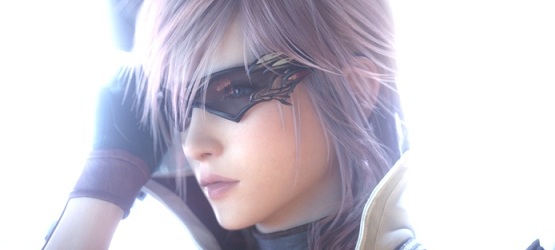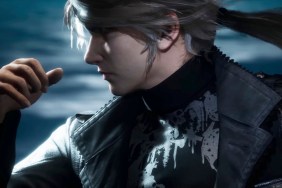[Editor’s Note: Review is of the Japanese version of Lightning Returns: Final Fantasy XIII, purchased at the expense of the reviewer. Reviewer lives in Japan and speaks/reads Japanese.]
I was excited about Lightning Returns: Final Fantasy XIII. Between the game’s concept seemingly tailor-made for my love of time control and time travel, and the apparent high amount of customization implied by the demo, I found myself looking forward to this third chapter of Lightning’s tale. Its mechanics sounded great and made for a very fun demo; I had every reason to look forward to this game. Ultimately, this proves to be yet another case of press releases, demos, gameplay videos, and trailers not being able to replace the experience of handling the final product, as I was left wholly unsatisfied and wishing I hadn’t been fooled into anticipating Lightning’s comeback.
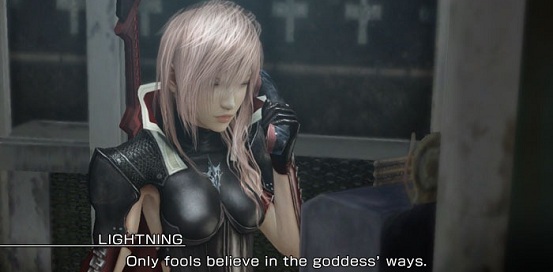
One thing that might hook players initially is the fast-paced battle system. Players customize three outfits/jobs called “Styles” with equipment and skill sets, and each of these setups has its own ATB meter. Using skills depletes the meter at different rates depending on the action taken, after which a wise player will switch to a different Style and continue unleashing the pain. Timing your Guard is extremely important, far more so than in any previous Final Fantasy game, as is the proper juggling of skills. You won’t be pressing X to win in LR: FFXIII‘s boss battles. Its toughest enemies provide heart-pounding intensity that really test a player’s strategy as well as one’s quick fingers. These few fights, however, are the exception and not the rule. Overall, once you learn the system, too many fights become dull, rote experiences. That’s a real shame, because those few fights that do test the limits are memorable and fun as heck.
As a sucker for time travel fiction (as opposed to boring time travel facts), I was highly intrigued by its time-bending setup. The world will end in 13 days, and players must guide Lightning in saving souls, wiping out monsters, and otherwise tying up all loose ends and getting the world ready to press that big Reset button in the sky. All actions cost a certain amount of time on the doomsday clock, and the game was marketed with a hurry-up intensity as a selling point. In-game reminders abound that, in so many words, “You gotta hurry up! No time to do everything, time is of the essence!” Intensity ran high during LR‘s early moments, but quickly dwindled upon the realization that I’d completed every story quest and the majority of its optional quests before even the game’s midpoint, on Normal difficulty. There wasn’t enough content to actually fill up the whole game.
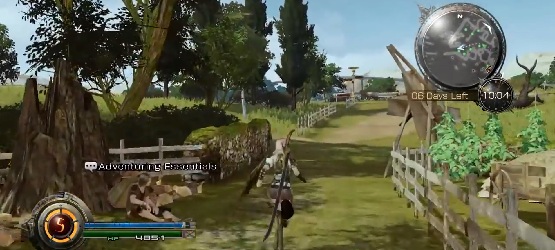
Perhaps this lack of content is why player progress is so stinted. It’s exciting, at first, to customize Lightning and make her into the warrior you’d like her to be. Such customization is a key part of nearly any RPG. It becomes quickly apparent, however, that the developers worked quite well to ensure that player progress goes according to their own formula. It’s perfectly fine to have a certain ceiling on progress, but rarely do I find these ceilings smacking me in the head as I did in Lightning Returns. Other times, progress will be dangled before the player like a carrot to a horse, but isn’t actually available because there’s a missing ingredient, which can only found in Hard Mode.
That might sound acceptable, but note that Hard Mode is not available from the beginning of the game, meaning some of the best features don’t open up until a second playthrough. You have to load Normal clear data to unlock Hard. Many players might be scared out of playing Normal Mode from the start, because selecting it gives a warning that says in so many words, “Wait, are you sure? Normal Mode has this disadvantage and that disadvantage, and also this is harder. We highly recommend everyone start with Easy Mode, but hey, it’s your funeral.” Good thing I defied the warning, because the progression caps in place for Easy Mode make it sound completely boring — and no, not just because it’s easy. The producers and developers are going out of their way to funnel players into Easy Mode, and yet this is the least fun, most hampered, most broken mode. Even on Normal, one is likely to feel ripped off. Hard Mode not being available from the start is ridiculous, and so is the lack of clear descriptions between the different modes.
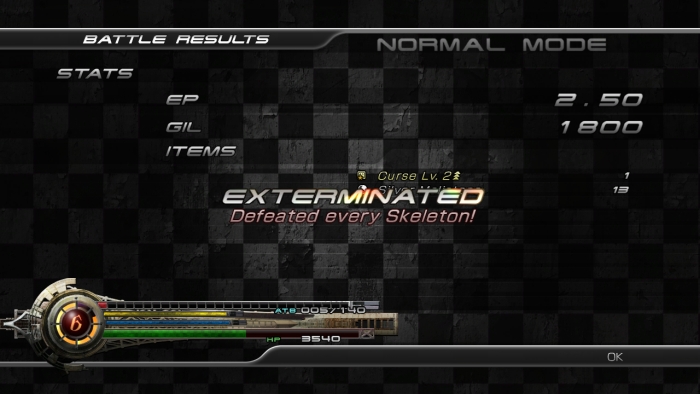
Other, small issues further show this game’s broken nature, and I don’t just mean the unintentionally hilarious NPC behavior. Quests that eat a ton of time and include tough battles are met with microscopic reward, whereas eyes-closed breezes yield a fortune. Shouldn’t the hardest and/or most time-consuming quests yield the best rewards? Or if they don’t, shouldn’t there be some kind of story-based justification for the abnormality? Not according to Square Enix.
Lightning Returns: Final Fantasy XIII tells a story with all the brilliant subtlety of an ice skate to the orbital. Rather than letting the player feel like a part of Lightning’s world or feel some kind of connection to it, Motomu Toriyama and his crew basically wrote a mixture of vacuous plot points and tropes on the sides of some dice, rolled them, and then made the scenes happen.
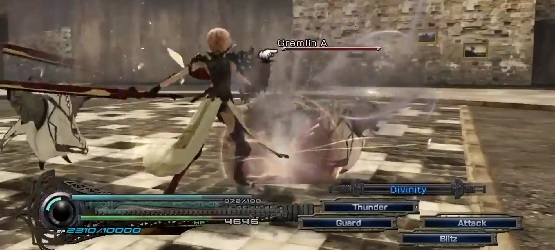
Lightning herself shows no growth as a character, cast members loop around on the old familiar carousel of situations, and scenes that could have been killers unfold as melodrama, all culminating in an ending that simultaneously rips off Final Fantasy VII and Final Fantasy IX, all while ignoring everything that made those games special to begin with.
Reports that Lightning was the only party member are false, as she’s followed by two constant companions named Jagged Edge and Graphical Pop-in. In Final Fantasy XIII-2, the graphics took a noticeable step backward from the original XIII; in this third installment, you’ll see another downgrade, even on the nicest of TV screens. Crowded areas are prone to staggering drops of the frame rate, flora looks awful, and the dreaded “jaggies” ride too many edges, too many times, too obviously. While adequate on the whole, it’s hard not to look at this game and see the decline compared to the other two FFXIII games. It’s disappointing to see this near end of the PS3’s life, when graphics should be looking better instead of worse. The visuals in CG cutscenes, at least, look every bit as splendid as a Final Fantasy game should, especially in the beginning and ending.
On the bright side, at times (though not consistently), environments overall do look rather good. Final Fantasy XIII‘s general lack of townz earned it many complaints, and while Final Fantasy XIII-2 put fancy skins on shops, it didn’t exactly scratch that itch. When it comes to fun world exploration and quality towns, Lightning Returns easily claims top honors in the Final Fantasy XIII trilogy.
Where up-close visuals fail, audio satisfies. LR: FFXIII features a mix of new compositions and old favorites for a pleasant soundtrack. Voice acting is consistently impressive, really giving life to any and all who speak.

But even pretty music can’t help the lasting impression of Lightning Returns, as concluding thoughts are marred by its final dungeon and awful ending. The last area is neither fun nor interesting, serving only as one last annoyance before the laughable ending comes along and insults your intelligence even worse than the infamous ending of Final Fantasy XIII-2.
This stings because so much potential was there. It was all right there, waiting to be made into Final Fantasy‘s return to form. On paper and in demos, the battle system and customization possibilities seemed wonderful, but in practice, LR: FFXIII‘s gameplay falls apart too quickly. Its underachieving graphics and nonsensical story serve only to add salt to the wounds.
-
CG cinemas look sharp.
-
The tension in some battles is off the charts.
-
Outfit variety.
-
Soundtrack mixes old and new.
-
Interesting battle system.
-
Great environments and townz.
-
Customization had a lot of potential, was interesting for a short time.
-
Takes risks.
-
A thin amount of real content desperately stretched in order to appear longer.
-
Poor pacing.
-
Story still a garbled mess.
-
Nonsensical, ridiculous ending.
-
Characters and objects look horrible up close.
-
Pop-in and frame rate drops.
-
Difficulty modes not organized properly at all.
-
Feels sloppy, rushed, and thrown-together.
-
So much potential completely fumbled.
